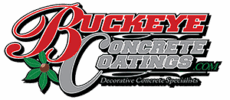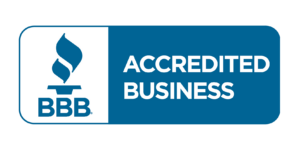When you walk into a clean kitchen or a neat hospital hallway, you probably notice the bright lights or the shiny floor. But there is one thing many people do not notice right away. It is a small detail that helps keep these spaces clean and safe. That detail is floor coving.
Floor coving is the curved edge where the floor meets the wall. Instead of a sharp corner, it creates a smooth and rounded surface. It may not seem like a big deal, but this simple feature makes a huge difference in both homes and businesses. In this guide, you will learn why floor coving matters, where it is used, and how it helps people every day.
What Is Floor Coving?
Floor coving is the curved part between the floor and the wall. Instead of a sharp corner where the floor meets the wall, coving gives it a smooth curve. It looks neat and makes cleaning easier. It is made from vinyl, rubber, epoxy, or tile. Some types are soft and bend easily. Others are hard and strong. People use floor coving in homes, stores, schools, kitchens, and more.
Why Do People Use Floor Coving?
It Keeps Things Clean
Corners are hard to clean. Dust and dirt build up and stay hidden. Coving makes the corners smooth, so you can clean them better. Mops and vacuums can reach every part of the floor without missing anything. This is super helpful in places where cleaning is important, like kitchens, hospitals, and bathrooms.
It Stops Water from Leaking
In rooms where water is used frequently, water can get into cracks, causing mold, damage, or bad smells. Floor coving stops this by sealing the space between the wall and the floor.
That is why people like using it in bathrooms, laundry rooms, and basements.
It Makes Rooms Look Nicer
Coving gives rooms a finished look. It connects the floor and wall smoothly and cleanly. It works well in both homes and workspaces. Even in a garage, coving makes the room look more organized.
It Protects Walls and Floors
In busy places, walls often get bumped by carts, chairs, or cleaning tools. Floor coving helps protect the lower part of the wall from scratches and dents. It also protects the edges of the floor from damage.
Floor Coving in Residential Spaces
Many people do not realize that floor coving can be a great feature in their homes. It adds value, makes cleaning easier, and helps prevent long-term damage.
1. Bathrooms
Bathrooms are full of water, steam, and soap. When water spills or leaks, it can seep into the small cracks where the wall and floor meet. Over time, this can cause mold, bad smells, and damage to the wall. Floor coving helps block that water from reaching the wall. It makes the room easier to clean and healthier to use every day.
2. Kitchens
Home kitchens can get messy. Oil splashes, food spills, and water drips happen all the time. Floor coving makes it easier to clean those messes. It also helps stop crumbs, liquids, or dirt from building up in the corners. That means a cleaner kitchen and less work for you.
3. Laundry Rooms
In many homes, the laundry room is where leaks happen. Whether it is a loose hose or a full washing machine, water can be a problem. Floor coving gives your walls a bit of extra protection and helps contain water before it spreads.
4. Basements
Basements are often damp or musty. Floor coving helps protect the walls in case of a leak or small flood. It also helps with cleaning, especially if you use your basement for storage or as a workshop.
5. Garages
A lot goes on in garages. You park your car, store tools, and maybe even do DIY projects. Floor coving adds a clean finish to the space and protects the walls from oil stains, muddy shoes, or bumps from bikes and boxes.
Why Homeowners Opt For Floor Coving
- It gives the room a clean and finished look
- It stops water and dirt from getting into tight corners
- It makes cleaning faster and easier
- It helps protect your home from damage
- It can raise the value of your house
Homeowners who add coving to the right areas often find they spend less time cleaning and less money fixing problems later.
Floor Coving in Commercial Spaces
In businesses, floor coving is not just a smart idea. In many places, it is a requirement. Restaurants, hospitals, and factories need clean and safe floors. Floor coving helps meet health codes, protect property, and keep workers and customers safe.
1. Commercial Kitchens
Health departments usually require floor coving in kitchens. Why? Because sharp floor-to-wall corners are hard to clean. Food, grease, and bacteria love to hide in tight spots. Coving makes it easier for cleaning crews to do their jobs and helps kitchens stay up to code. Coving also protects the lower walls from being damaged by mop buckets, carts, or foot traffic.
2. Restaurants and Cafes
Even outside the kitchen, floor coving helps in dining areas and service zones. It adds a polished look to the space and makes daily cleaning quicker. Plus, it gives restaurant owners peace of mind knowing that food and liquids will not sit unnoticed in the corners.
3. Hospitals and Clinics
Cleanliness is everything in healthcare. Germs and dirt must be removed quickly and thoroughly. Floor coving helps staff clean the edges of rooms without missing a spot. That makes the space safer for patients and easier for the cleaning team to maintain. It also keeps walls safe from rolling carts, hospital beds, and wheelchairs that move through hallways all day long.
4. Daycares and Schools
In places where kids play, eat, and learn, spills and messes are part of the routine. Floor coving helps prevent dirt, liquids, and even small toys from hiding in corners. It also protects walls from crayons, toys, and furniture bumps. Parents and staff love it because it helps keep play areas clean, safe, and welcoming.
5. Grocery Stores and Supermarkets
Floor coving in food storage and prep areas helps stores meet safety rules. It keeps food areas clean and reduces the risk of mold or pests. In the front of the store, coving adds a smooth, clean look that blends well with modern designs. Carts, bins, and customers are tough on walls. Floor coving helps the store hold up under all that daily use.
6. Warehouses and Factories
Factories and warehouses have lots of machines, moving parts, and foot traffic. Floor coving helps protect both the floor and walls from damage. It also supports safety by making spills easier to clean and stopping liquids from spreading into hard-to-reach corners. It’s a minor feature, but in an industrial space, it plays a big role.
Benefits of Floor Coving in Businesses
- Meets health and safety rules
- Keeps workspaces cleaner
- Helps protect walls from damage
- Adds a neat and professional look
- Makes floor care faster and easier
- Helps reduce long-term repair costs
Business owners who choose floor coving often find that it keeps their space in better shape, which helps them focus more on serving their customers.
Common Materials for Coving in Different Spaces
For Homes
- Vinyl is popular because it takes minimal upkeep and is ideal for kitchens and bathrooms.
- Tile coving matches tiled floors and is used in bathrooms or laundry rooms.
- Rubber is soft and great for home gyms or playrooms.
For Businesses
- Epoxy coving is strong and often used in kitchens, factories, and hospitals.
- Rubber coving handles impact well and is good for schools, daycares, and warehouses.
- Vinyl coving is still common in offices, stores, and food prep spaces.
What to Consider When Choosing Floor Coving
Think about the space. Is it used daily or only now and then? Will there be water, spills, or heavy equipment? Do people walk there with shoes or bare feet?
Pick a coving material that fits the job. Soft and flexible for homes. Tough and seamless for workspaces.
Also, think about how it looks. Some people want their coving to match the wall or floor. Others like a different color to make it stand out. The right choice depends on the space and your style.
FAQs
What is floor coving used to prevent?
Floor coving is used to prevent dirt, water, and bacteria from getting trapped where the floor meets the wall. It creates a smooth surface that is easier to clean and keeps moisture out.
Where is floor coving most commonly used?
It is most commonly used in kitchens, bathrooms, hospitals, and commercial food areas. These spaces need high cleanliness and wall protection from spills and daily wear.
Why is floor coving used in commercial kitchens?
In commercial kitchens, floor coving is used to meet health code requirements and make cleaning easy. It stops food and liquids from building up in hard-to-reach corners.
Is floor coving used in homes too?
Yes, it is used in home bathrooms, kitchens, basements, and laundry rooms. It helps protect walls from water damage and makes cleaning faster and simpler.
How does floor coving help in hospitals and clinics?
Floor coving helps maintain a sterile and easy-to-clean environment in hospitals. It stops bacteria from hiding in corners and keeps the space safer for patients and staff.
Can floor coving be used in places with heavy traffic?
Yes, it is often used in factories, schools, and grocery stores. It protects wall edges from carts, equipment, and foot traffic while keeping the space neat and safe.
Conclusion
Floor coving may not be something people talk about often, but it matters. It protects walls, keeps corners clean, and helps meet safety standards in busy places. Whether you are building a new kitchen or running a business, coving is an innovative and simple upgrade.
So next time you are planning a renovation or starting a new build, take a closer look at your floors. The curve where the wall meets the floor might be small, but the benefits are big.


